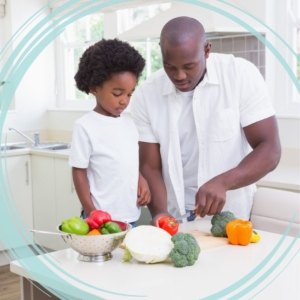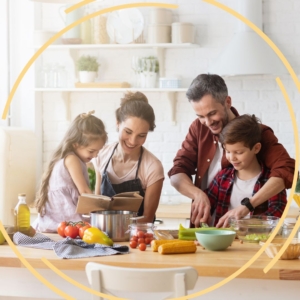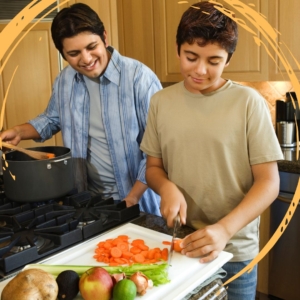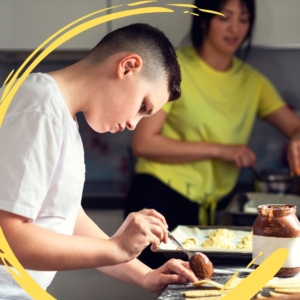| As a foster carer, your support in maintaining and celebrating your foster child’s cultural identity is invaluable. Encouraging them to cook and enjoy traditional foods is a significant step towards preserving their heritage and promoting their well-being. Let’s make food culture a vital part of our care for young people, helping them to leave care with both practical skills and a strong sense of who they are. |
| Benefits of Cultural Food
1. Comfort and Familiarity: Starting the day with familiar foods can provide a sense of normalcy and comfort, helping your foster child feel more at home. 2. Cultural Connection: Maintaining cultural traditions is crucial for the child’s sense of identity. Sharing a cultural breakfast honours their heritage and shows respect for their background. 3. Bonding Time: Preparing and enjoying breakfast together can be a wonderful bonding experience. It offers an opportunity to connect, communicate, and learn more about each other. 4. Educational Experience: Introducing other family members to traditional foods can be an educational experience, promoting cultural awareness and inclusivity. |
| How to Incorporate Cultural Food
– Learn Together: Involve your foster child in the preparation of breakfast. This can be a fun way to learn about their culture and preferences. – Source Ingredients: Visit local Middle Eastern grocery stores to find authentic ingredients. This also provides an outing that can be both educational and enjoyable. – Mix and Match: While it’s great to serve traditional foods, don’t hesitate to mix in some of your own favourites. This blend can help create a new family tradition. – Respect Preferences: Pay attention to your foster child’s preferences and dietary needs. Some children may take comfort in traditional foods, while others might enjoy trying new things. |
By integrating cooking into the daily routine, foster children can gain therapeutic benefits, develop valuable skills, and build a stronger sense of self-worth and stability.
Benefits of Cooking as Therapy for Foster Children
1. Emotional Outlet: Physical tasks like cutting, chopping, and beating can help children release built-up anxieties, tensions, and aggressions in a constructive manner.
2. Focus and Mindfulness: Cooking requires attention to detail and mindfulness, helping children to focus on the present moment and providing a break from negative thoughts or worries.
3. Sense of Achievement: Completing a recipe from start to finish gives children a tangible sense of accomplishment, which can boost their self-esteem and confidence.
4. Creativity and Expression: Cooking allows for creative expression through experimenting with flavors, ingredients, and presentation, helping children to explore and express their creativity.
5. Routine and Stability: Regular cooking sessions can provide a sense of routine and stability, which is particularly important for foster children who may have experienced instability in their lives.
6. Skill Building: Cooking teaches practical life skills such as measuring, following instructions, and time management, which are valuable for foster children as they grow and become more independent.
7. Social Interaction: Cooking can be a social activity, providing opportunities for bonding with foster parents, siblings, or peers. Sharing meals together can strengthen relationships and foster a sense of community.
Cooking can indeed serve as a therapeutic activity for foster children, helping them to channel their emotions and build a sense of accomplishment. Here are some ways cooking can be beneficial:
Practical Steps to Incorporate Cooking Therapy
1. Start with Simple Recipes: Begin with easy-to-follow recipes that match the child’s age and skill level to ensure early successes and build confidence.
2. Involve the Child in Planning: Let the child choose recipes, plan meals, and make shopping lists to increase their engagement and investment in the activity.
3. Create a Safe and Supportive Environment: Ensure the cooking environment is safe and supportive, providing guidance and encouragement while allowing the child to take on responsibilities.
4. Celebrate Accomplishments: Acknowledge and celebrate the child’s efforts and successes, whether it’s a perfectly baked cake or a creatively garnished salad.
5. Use Cooking as a Teaching Moment: Incorporate lessons about nutrition, cultural heritage, and the science behind cooking to make the activity educational as well as therapeutic.
6. Document the Journey: Keep a cooking journal or scrapbook where the child can record recipes, take photos of their creations, and reflect on their experiences and progress.







